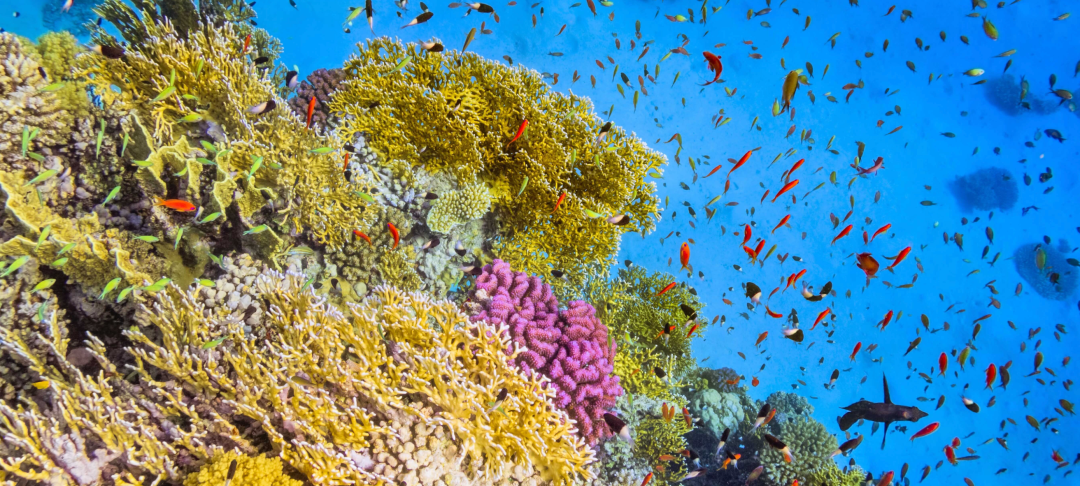Tracking nature loss is crucial for protecting global wildlife populations. Over the past 50 years, these populations have shrunk by an average of 73%.
Image source:Getty Images/cinoby
Dorothy Abade-Maseke
Head of Natural Finance and TNFD Africa
Head of the ANCA Secretariat, Department of Financial Deepening in African Capital Markets
Gavin Edwards
Executive Director of the Natural Benefits Initiative Secretariat
Nature plays a vital role in society and the economy, yet human activities continue to drive the ongoing loss of biodiversity.
To set global targets for natural restoration, we must have the ability to measure progress toward these goals—or track any deviations from them.
Reliable biodiversity indicators help us measure our impact on nature—just as we measure carbon emissions.
Increasing the presence of natural elements in the world is a beautiful goal. Ancient forests shelter countless forms of life, both on and beneath the surface, while bees and butterflies hum happily among meadows bursting with wildflowers. Fish swim upstream in rushing rivers, heading toward the ocean—where vast, unseen yet undeniable life thrives in the depths.Most encouragingly, the world naturally benefiting extends far beyond just beautiful scenery. Nature's recovery is a critical indicator of the planet's healing, and humanity's future is inextricably linked to the urgent need for nature's restoration.However, according to the World Wildlife Fund's "2024 Living Planet Report," global wildlife populations have declined by an average of 73% over the past 50 years. The report warns that ongoing human activities are driving irreversible biodiversity loss, which could lead to catastrophic consequences—particularly by disrupting Earth's life-support systems and posing serious threats to humanity.Although humans have long felt a moral obligation to protect nature, it is only recently that we’ve begun to recognize nature’s critical importance to society and the economy.Tracking progress toward biodiversity goalsIn 2022, at the COP15 conference held in Montreal, governments from 196 countries adopted the most ambitious biodiversity framework ever agreed upon—the Global Biodiversity Framework. The framework clearly outlines the goal of "halting and reversing global biodiversity loss by 2030, putting biodiversity on the path to recovery." This global objective is straightforward: by the end of the decade, biodiversity should be richer than it was at the start. One of the key challenges now is figuring out exactly how to measure progress toward nature’s restoration—crucial for determining whether we’re on track to achieve this transformative vision.The 2024 biodiversity conference, COP16, was held in Cali, Colombia, where countries were expected to submit detailed strategies and plans outlining how they intend to contribute to global biodiversity goals. However, more than three-quarters of the nations failed to meet the deadline for submission. Meanwhile, the state of nature continues to deteriorate.COP16 recognized the critical role of Indigenous peoples and local communities as stewards of nature, resulting in an agreement that requires companies benefiting from natural genetic data to contribute to a global fund aimed at covering conservation costs. Both developments represent significant progress. However, the fundamental issue of funding flows to developing countries remains deadlocked in national discussions.Encouragingly, more and more companies and financial institutions are beginning to recognize the importance of nature. They aim to understand both their dependence on and impact to nature, with the ultimate goal of delivering net positive outcomes for ecosystems (nature benefit) while striving toward net-zero emissions. To achieve this, they need to adopt consistent and comparable methods for measuring results—and assessing whether their efforts to ensure global nature benefits are on track.Currently, there is no universally accepted method for measuring either the degradation or recovery of nature. Hundreds of different indicators are already being used to assess the state of natural ecosystems, making it challenging to select the fewest yet most appropriate metrics for evaluating progress—both globally and at the local level.That’s why the Nature for Good Initiative has been dedicated to bringing together and consulting with NGOs, business platforms, standards-setting and advisory bodies, as well as academics from around the globe. We invite anyone eager to join the conversation to collaboratively explore how we can develop a robust framework for measuring nature’s health—one that garners widespread support and consensus.Now, we are moving toward the next step: developing a set of robust biodiversity indicators to measure whether nature is recovering.Measuring Nature's Loss and RecoveryOf course, nature is inherently complex. Every year, new species are discovered, and researchers continue to deepen their understanding of the intricate relationships and dependencies among them—but countless mysteries still remain to be explored. So, how do we measure something we don’t yet fully understand? The key lies in identifying the right indicators that can help us determine whether nature is on the path to recovery.Measuring climate change has faced similar challenges in the past. The 1.5°C target also involves a complex web of indicators and interdependencies. Now, thanks to the metric of carbon dioxide equivalent, we’ve reached a shared understanding and consensus on how to achieve net-zero emissions. In other words, we can hold each other accountable—individually, at the corporate level, and across nations—regarding how close we are to meeting this critical goal.We need to empower every actor to start measuring their contribution to nature’s recovery—just as easily as they measure their carbon footprint. Whether it’s financial institution staff or farm workers, whether they’re in Papua New Guinea or Finland—we must all be equipped to answer this critical question: Are our actions and decisions helping to restore nature—or are they making it worse?The "Montreal Global Biodiversity Framework" calls for halting and reversing nature loss, emphasizing that this is no longer an option—it’s a necessity that demands immediate action. Governments around the world are now stepping in to regulate and develop policies aimed at tackling this critical issue.In the summer of 2024, the European Union adopted the Nature Restoration Law, setting legally binding targets to restore degraded ecosystems. Starting in 2025, businesses operating in Europe—or companies doing business with Europe—will be required to begin reporting their impacts on and dependencies with nature, as outlined in the new Corporate Sustainability Reporting Directive.Other regions are also moving in a similar direction. For instance, Botswana has introduced voluntary nature-related disclosure guidelines for companies listed on its stock exchange. Currently, many companies aren’t sure how to begin measuring their existing impact on biodiversity—or evaluating the effectiveness of their mitigation efforts—making this an important initiative.But compliance is far from enough—we all need to contribute to nature’s recovery. Ultimately, what truly matters is the gradual enrichment of biodiversity, witnessing a vibrant array of butterflies, bees, birds, and fish. Only then can we confidently say that our mitigation strategies are working—and that economic prosperity and well-being can indeed endure. By that time, we’ll be able to declare that humanity has finally stopped taking nature’s gifts for granted, recognizing once and for all that human success is inextricably linked to nature’s thriving. We must realize that nature isn’t just essential for human survival; it’s also a profound embodiment of beauty in its own right.
The above content solely represents the author's personal views.This article is translated from the World Economic Forum's Agenda blog; the Chinese version is for reference purposes only.Feel free to share this on WeChat Moments; please leave a comment below the post if you’d like to republish.
Translated by: Di Chenjing | Edited by: Wang Can
The World Economic Forum is an independent and neutral platform dedicated to bringing together diverse perspectives to discuss critical global, regional, and industry-specific issues.
Follow us on Weibo, WeChat Video Channels, Douyin, and Xiaohongshu!
"World Economic Forum"





